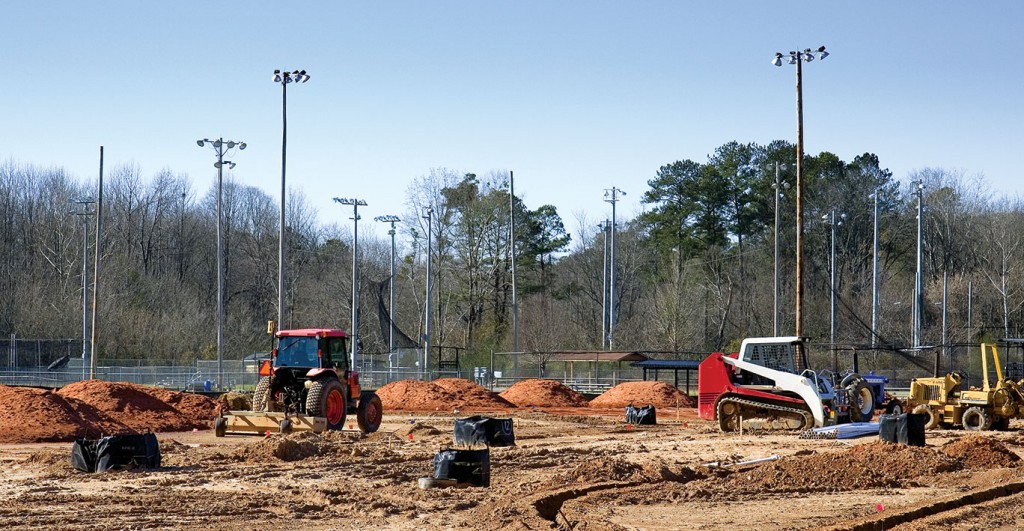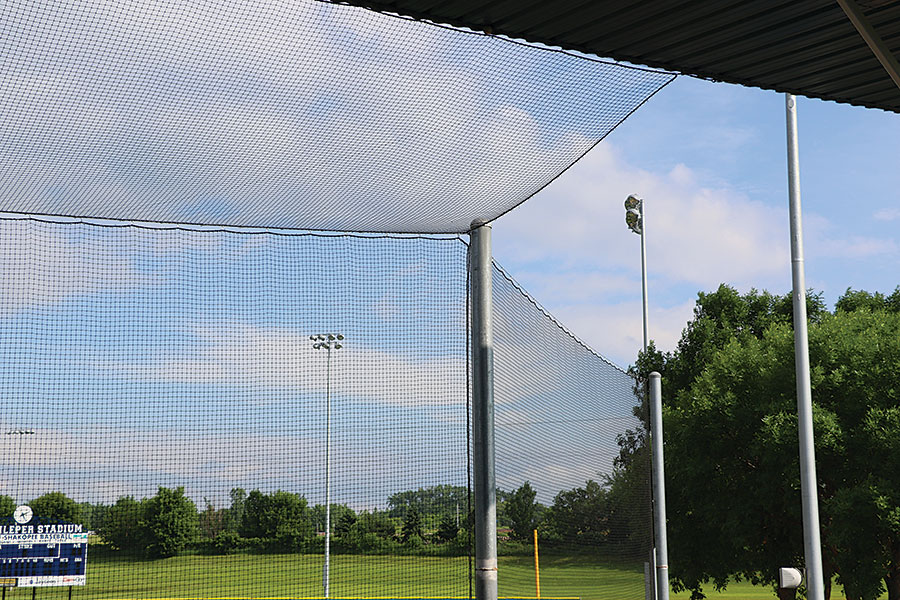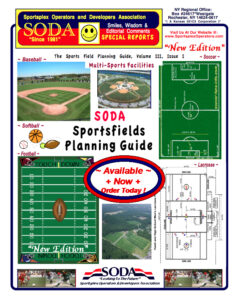
How much space will you need?

When looking for space to build a ballfield or a complex of fields, there are several factors that should be considered during the planning stage. In many cases, it is not just the ball diamond that is being built. Typically there are additional features to consider such as, dugouts, bathrooms, concession areas, storage facilities, bleachers, drainage swales, parking and even buffer zones that may need to be built as well.
For the ballfield portion, the table below gives you rough estimates for the area needed for various sized ballfields allowing adequate space for field amenities such as bleachers, dugouts, fences, lights and scoreboards.
Remember, your parking lot is a piece of the puzzle that can use up a lot of space in a hurry. You can use 20 spaces as the starting point for the minimum amount of parking at a ballfield. 20 spaces will need approximately 0.3 acre. For each additional parking space you’ll need to add another 0.015 acre per space.
| Baseball Field Space Needs | |
|---|---|
| 90 ft bases with 400 ft fence | 4.5 acres |
| 80 ft bases with 315 ft fence | 3 acres |
| 70 ft bases with 275 ft fence | 2 acres |
| 60 ft bases with 215 ft fence | 1.5 acres |
| Softball Field Space Needs | |
|---|---|
| 65 ft bases with 275 ft fence | 2.5 acres |
| 60 ft bases with 200 ft fence | 1.5 acres |
Addressing Fan Safety
Multi-field complexes are often planned with little thought regarding protection of spectators. Sometimes fields are squeezed tight together with a bare minimum of common space between fields. Fans watching a game on one field can be subject to stray foul balls from other fields that are right behind them. These is a common issue with many multi-field complexes. Now, with recent line-drive injuries to fans at MLB ballparks, more attention than ever is being paid to protecting fans at all levels. Beacon is an excellent resource for netting options from local ballparks all the up to professional venues. We have more info regarding protective netting available for you here: Beacon Netting Solutions for Keeping Fans Safe

There are three ways you can address multi-field safety. The first way would be to install an overhead netting system to protect the fans. A second idea would be to address this potential problem in the planning stages when simple realignment of fields can help to increase the amount of room between fields, reducing foul ball risk. Your third option involves a little bit of the first two options, and in most cases will prove to be your best overall plan.
Start by planning your common areas to be as open as possible between fields. Then, use a combination of barrier protective netting and deciduous trees. Planting trees along the common areas along with netting will greatly reduce the risk of spectator injury. Barrier netting will deflect the lower flying line drive foul balls while trees will become a living, growing ball deflection system for the higher foul pops entering common areas. The older the trees get between fields, the bigger and more dense the natural deflection system will be. Additionally, trees will also provide much appreciated shade for those hot summer days and they’ll serve as a wind breaker on gusty days. They’ll improve fan comfort and provide some foul ball protection while at the same time providing a more visually appealing park-like atmosphere.
Managing Drainage
Probably the most critical part of an athletic field is its surface drainage. There are two main styles of surface grade that commonly are used for controlling surface water removal. The first and most popular is called the “turtle back” where the base of the pitcher’s mound is the highest point on the field and elevations fall away from that point in all directions much like the back of a turtle’s shell. On this type of field, the infield is typically graded to a 0.5 – 1% slope. The outfield and foul areas should be graded at a 1 – 1.5% slope. This is the quickest and most efficient method to shed water off a ballfield.
Another, less popular option involves having the whole field tilt from one side of the field to the opposite side. This type of drainage is called “sheet flow” drainage — like a sheet of water sliding off the side of a hill. This surface drainage will work provided the home plate area is at the highest point of the slope. You want to avoid water draining toward the infield and home plate — it should always move away from the infield. Sheet flow will drain slower than the turtle back method because the water will have a longer distance to travel before exiting the field.
With all of the above in mind, try to find land for your ballfield that will require the least amount of rough grading in order to satisfy one of the above drainage styles. Drainage swales and/or storm drains along the edges of a ball diamond in “out-of-play” areas should be used to carry the surface drained water away from the site.
Get in Touch
If you would like help in planning your ballpark, let our team of engineers help guide you through the process. We’re here to help you make sure you avoid costly mistakes and see that in the end you have a great ballpark your community will take pride in.
. . . . . . . . . . . . . . . . . . . . . . . . . . . . . . . . . . . . . . .
It’s Never To Late To Save Your Program Money !
Check Out Our Insurance Program Today !
* ( 16 Different Amateur Sports ) *
( Officials, Tournaments, & Facilities ) *
1-800-622-7370
. . . . . . . . . . . . . . . . . . . . . . . .
www.sadlersports.com/soda
. . . . . . . . . . . . . . . . . . . . . . . .
“Proudly Serving The USA/Canada





0 Comments